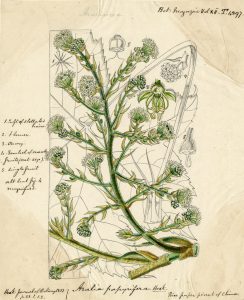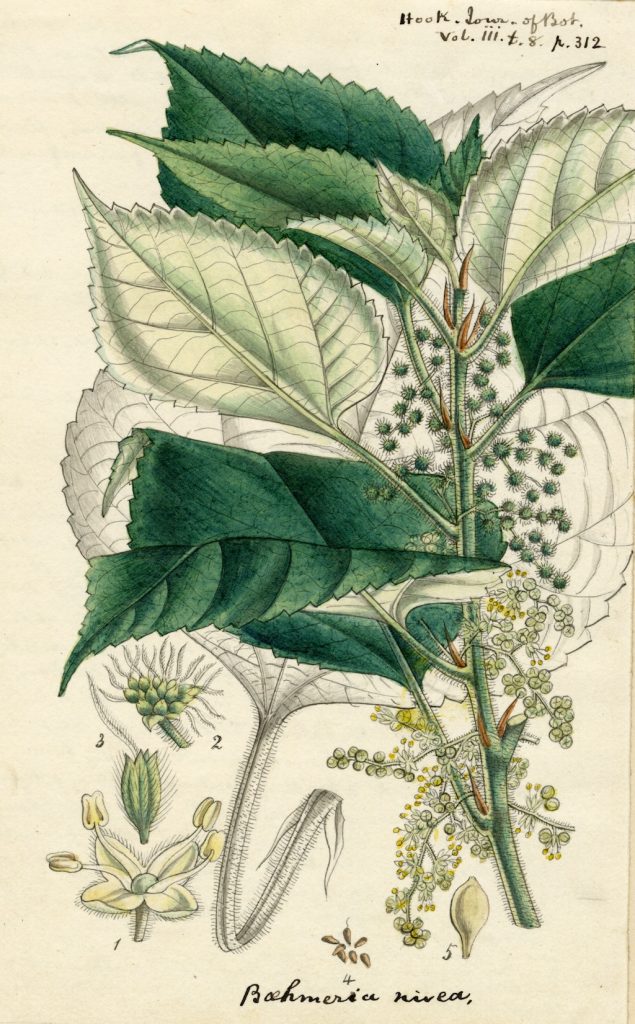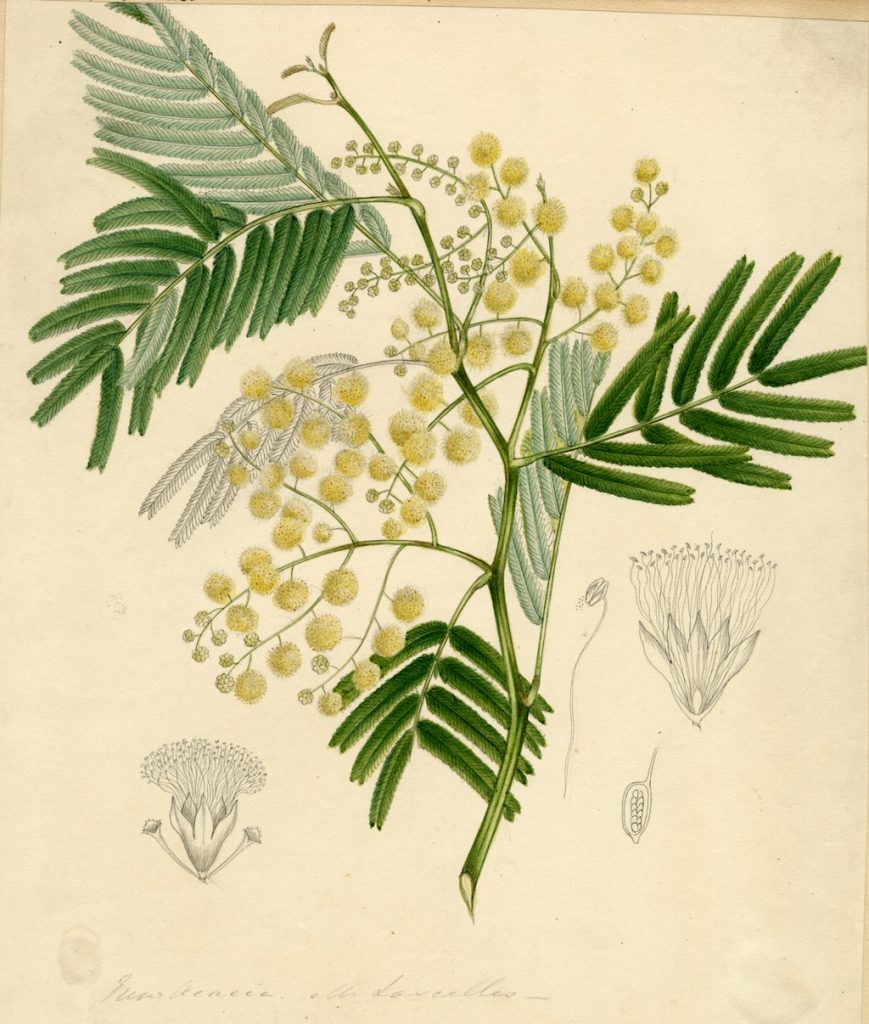 Two new books are shortly to be published by RBGE about one of the Garden’s most significant, but forgotten, benefactors – Hugh Cleghorn of Stravithie (1820–1895). Some of the most interesting books in the library (the oldest from 1582) come from his collection, as do 3000 botanical drawings made for him by Indian artists, and his herbarium of several thousand Indian plants. Cleghorn studied botany under Robert Graham at RBGE in 1838 and 1839 as part of his medical degree, before joining the East India Company as a surgeon, and spending the rest of his career in India.
Two new books are shortly to be published by RBGE about one of the Garden’s most significant, but forgotten, benefactors – Hugh Cleghorn of Stravithie (1820–1895). Some of the most interesting books in the library (the oldest from 1582) come from his collection, as do 3000 botanical drawings made for him by Indian artists, and his herbarium of several thousand Indian plants. Cleghorn studied botany under Robert Graham at RBGE in 1838 and 1839 as part of his medical degree, before joining the East India Company as a surgeon, and spending the rest of his career in India.
From his earliest days Cleghorn had a major interest in economic plants, in 1856 becoming the first Conservator of Forests for Madras, and in the 1860s he helped Dietrich Brandis to set up a national forest service for the whole of India. The first book is a biography of Cleghorn, and in the second will be reproduced 200 of the botanical drawings.
 One of the great joys of working for the RBGE is that every day one makes new discoveries in the collections – both living and dead. Nobody can know all 3.5 million specimens in the herbarium, nor the 13,500 species growing in the garden. This morning I was asked to look at an interesting banana from Taiwan growing in the Temperate House, and was thrilled to see growing beside it no fewer than three plants of which drawings will be reproduced in the Cleghorn volume. These have been included not only to represent his interest in economic botany, but the various types of illustration he commissioned. Acacia dealbata was the subject of an earlier Botanics Story, but when Cleghorn had it painted in 1859 it had recently been introduced from Tasmania to the Nilgiri Hills of South India, along with other Australian acacias and eucalypts, as quick growing trees to supply an ever increasing demand for fuel wood. As in many other parts of the world this had disastrous consequences, when the trees became naturalised and a threat to fragile, native ecosystems, in this case shola grasslands. The other two plants both come from China. Tetrapanax papyrifer is the Chinese rice-paper plant – the ‘paper’ is made from the pith – and this specimen was collected in Taiwan, probably the native home of the plant, though it has been much more widely cultivated (in S China, and elsewhere in the Tropics as an ornamental). The stems of Boehmeria nivea yield a valuable fibre, known as ‘ramie’, from which a lightweight fabric is woven. Cleghorn himself purchased a summer jacket made of the fibre, on which he gave a talk to the British Association when it met in Edinburgh in 1850.
One of the great joys of working for the RBGE is that every day one makes new discoveries in the collections – both living and dead. Nobody can know all 3.5 million specimens in the herbarium, nor the 13,500 species growing in the garden. This morning I was asked to look at an interesting banana from Taiwan growing in the Temperate House, and was thrilled to see growing beside it no fewer than three plants of which drawings will be reproduced in the Cleghorn volume. These have been included not only to represent his interest in economic botany, but the various types of illustration he commissioned. Acacia dealbata was the subject of an earlier Botanics Story, but when Cleghorn had it painted in 1859 it had recently been introduced from Tasmania to the Nilgiri Hills of South India, along with other Australian acacias and eucalypts, as quick growing trees to supply an ever increasing demand for fuel wood. As in many other parts of the world this had disastrous consequences, when the trees became naturalised and a threat to fragile, native ecosystems, in this case shola grasslands. The other two plants both come from China. Tetrapanax papyrifer is the Chinese rice-paper plant – the ‘paper’ is made from the pith – and this specimen was collected in Taiwan, probably the native home of the plant, though it has been much more widely cultivated (in S China, and elsewhere in the Tropics as an ornamental). The stems of Boehmeria nivea yield a valuable fibre, known as ‘ramie’, from which a lightweight fabric is woven. Cleghorn himself purchased a summer jacket made of the fibre, on which he gave a talk to the British Association when it met in Edinburgh in 1850.
Of Cleghorn’s 3000 drawings, about half were copied from European prints, as in the case of the Boehmeria and Tetrapanax drawings, but he also employed artists to draw plants from nature, and the Acacia is probably drawn by the artist Govindoo, who had previously worked for Robert Wight.
Associated Accession Records













